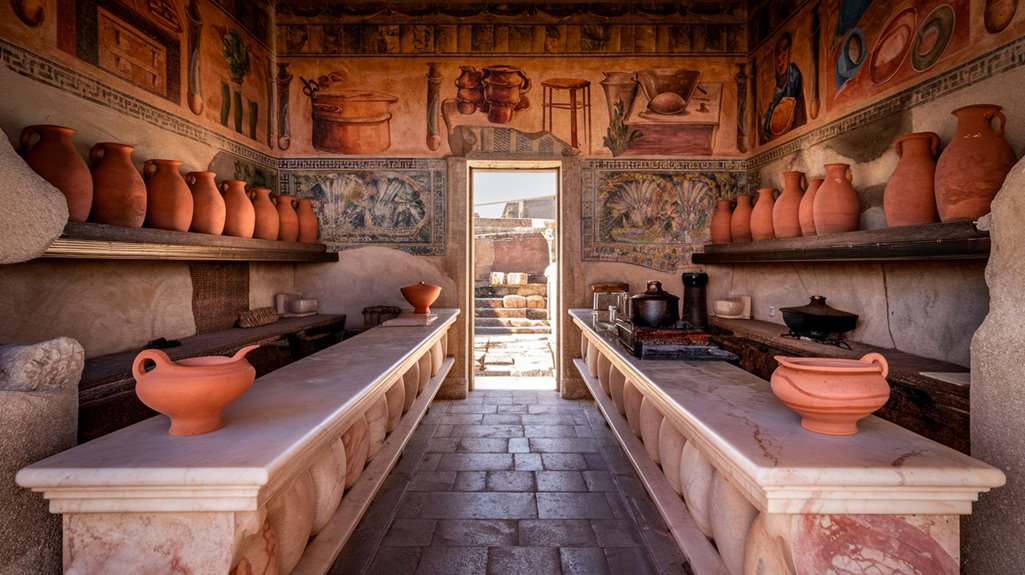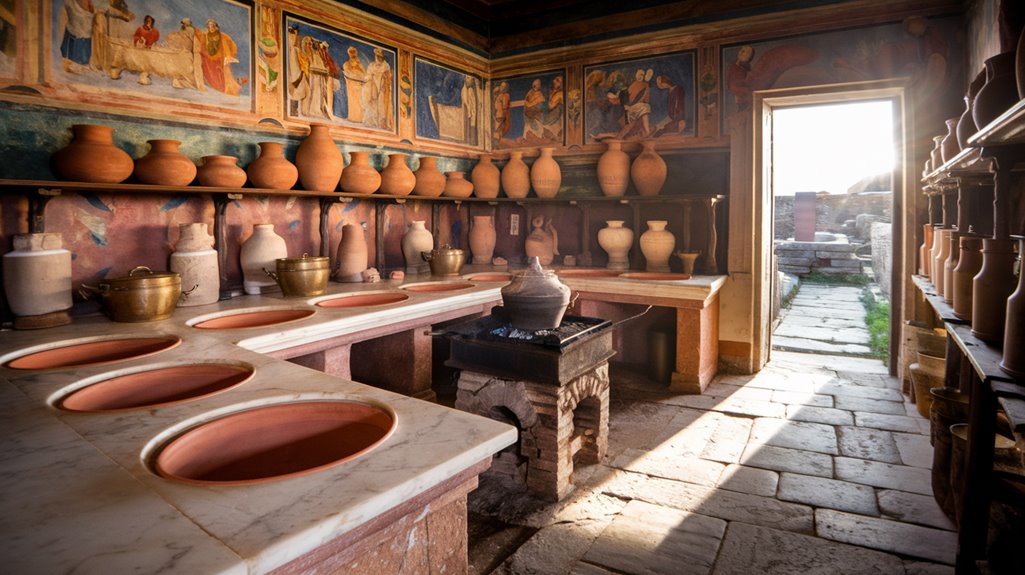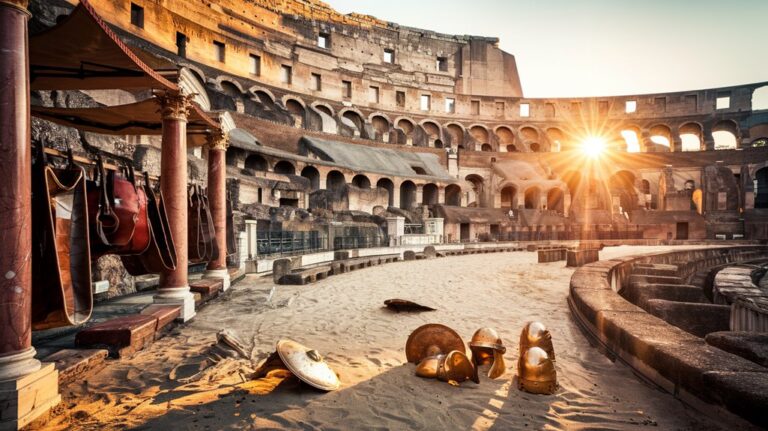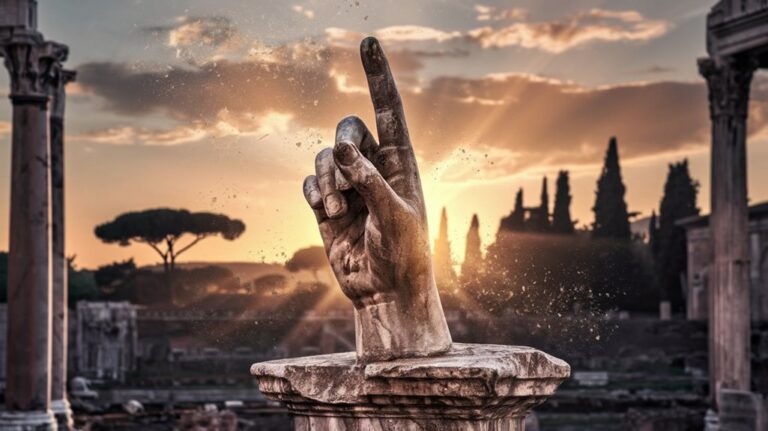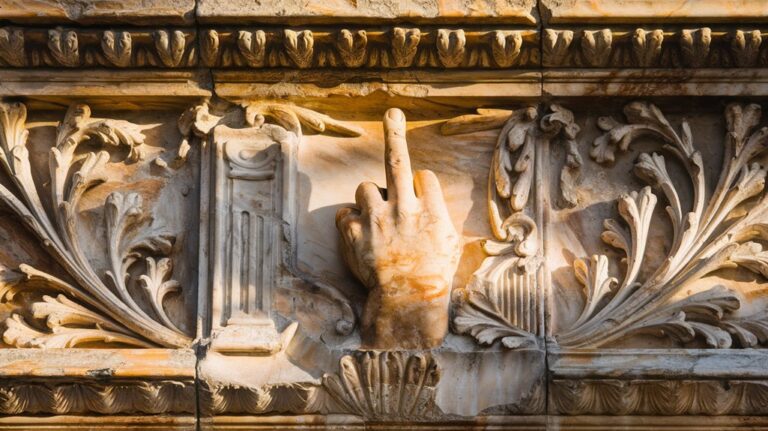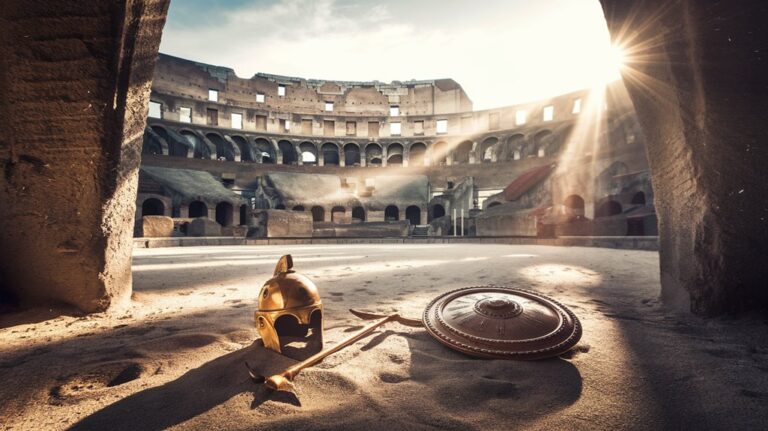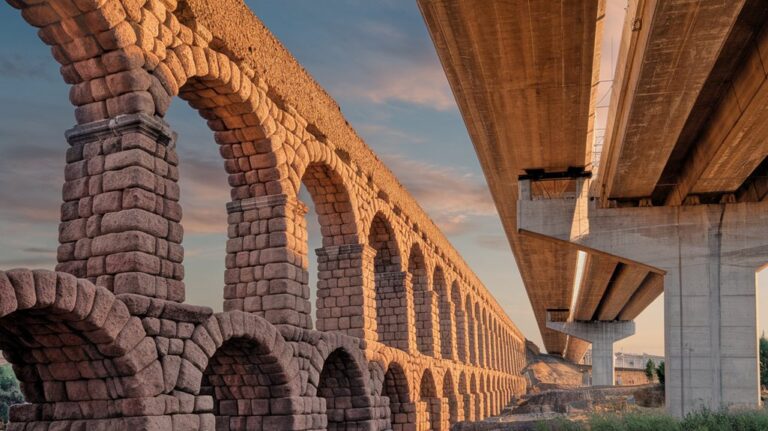Ancient Romans Had Their Version of Fast Food Eateries
You might think the concept of grabbing a quick bite on the go is a modern invention, but the ancient Romans had you beat by about two millennia. Their thermopolia—bustling street-side eateries—served up ready-made meals to hungry citizens from all walks of life. These establishments weren't just about convenience; they were architectural innovations that transformed Roman social life and laid the groundwork for today's fast-food culture. What you'll discover about these ancient snack spots will challenge everything you assume about fast food's origins.
What Made Thermopolia the Fast Food Giants of Ancient Rome
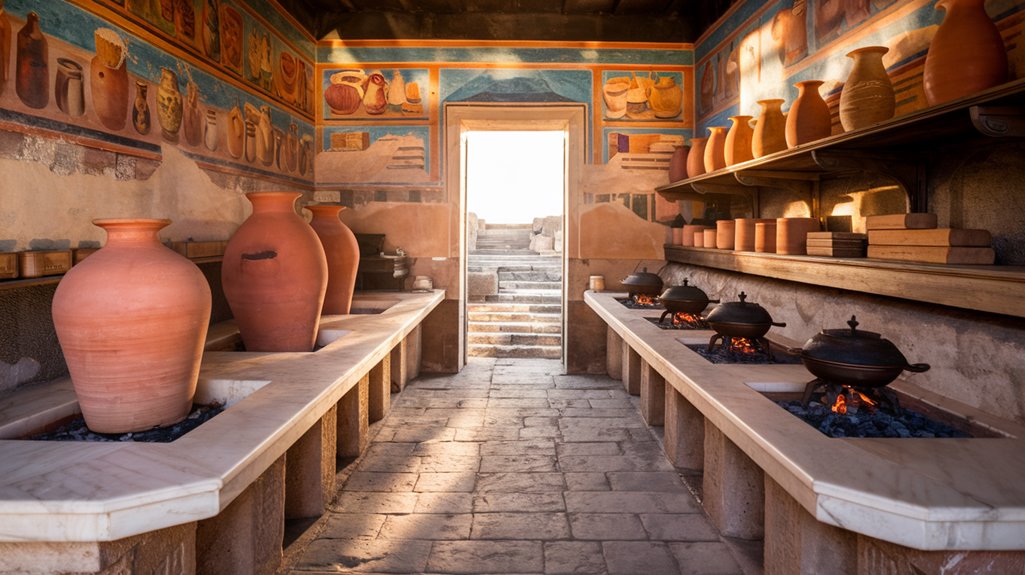
While modern fast-food chains dot our city landscapes, the ancient Romans pioneered quick-service dining through their thermopolia – the street-side eateries that served as the McDonald's of their day.
These thermopolium innovations revolutionized social dining with their efficient L-shaped counter designs and embedded terracotta jars for food storage. You'd find these establishments serving ready-to-eat meals directly from the street, making them perfect for busy urban dwellers who lacked private kitchens in their apartment buildings. The menu featured diverse options including soups and stews prepared with duck, chicken, and various seafood dishes.
The counters featured distinctive earthenware containers storing various drinks and dried foods, while some locations even boasted colorful frescoes and mosaics. Among their most popular offerings was warm, spiced wine served to thirsty patrons throughout the day.
Though scorned by the upper classes, thermopolia became essential community hubs for lower and middle-class Romans, travelers, and anyone seeking a quick, accessible meal in the bustling cities.
Daily Menu: From Snails to Ancient Hamburgers
The food offerings at Roman thermopolia ranged from humble porridge to exotic snail dishes, catering to every patron's budget and taste.
If you were a common laborer, you'd find affordable options like grain porridge, nuts, and dried fruits to keep you going through the day. These establishments served meals from large countertops where food was readily accessible.
For mid-range dining, you could choose from ancient ingredients like goose liver, eggs, and fresh seafood. Common seasonings included salt and garlic.
The culinary techniques included stewing meats and creating flavorful skewers, while baked cheese with honey offered a sweet-savory treat.
If you were wealthy, you'd enjoy luxurious dishes like isicia omentata, an early version of today's meatballs, or specialty items like escargot and game meats.
To complement your meal, you could sip on calida or conditum, spiced wines that warmed both body and spirit.
The Social Hub: Who Ate at Roman Street Food Joints
Since ancient Romans often lacked proper kitchens at home, street food joints called thermopolia became essential social hubs across urban neighborhoods.
The patron demographics mainly consisted of working-class urbanites who couldn't afford private cooking facilities, though you'd occasionally spot wealthy Romans dropping by despite their general disdain for these establishments. During the height of the Empire, vendors served delicious farm-to-table oysters and other fresh foods. Recent excavations have revealed over 200 food stalls in Pompeii alone.
These eateries weren't just about food – they shaped daily dining rituals for locals and travelers alike.
You'd find people gathering for all meals throughout the day, following Greek-influenced quick-eating practices. While some came purely out of economic necessity, others were drawn to the social atmosphere, including the gambling and competitive drinking scenes.
Archaeological evidence from Pompeii shows these establishments weren't just eateries but vibrant community centers serving diverse social needs.
Architectural Marvels: Design and Decoration of Thermopolia
Ancient Roman thermopolia showcased remarkable architectural ingenuity through their L-shaped stone counters and embedded terracotta jars (dolia). If you'd visited one, you'd have found these fast-food establishments strategically placed within multi-story apartment buildings, making them easily accessible to diverse populations.
The thermopolium architecture wasn't just practical – it was visually striking. You'd have seen colorful decorative frescoes adorning the walls, depicting everything from menu items to mythological scenes. Archaeological excavations have uncovered over 80 thermopolia in Pompeii alone. The innkeeper would serve patrons through circular marble openings while they sat at the counter.
The counters, sometimes covered in polychrome marble, featured large dolia where vendors stored hot and cold foods. Some locations even included back rooms for dining and central courtyards for gathering.
The facade's design, with its visible food containers and artistic elements, served as an ancient form of advertising, drawing customers in from the busy streets.
Recent Discoveries: What Pompeii's Excavations Tell Us
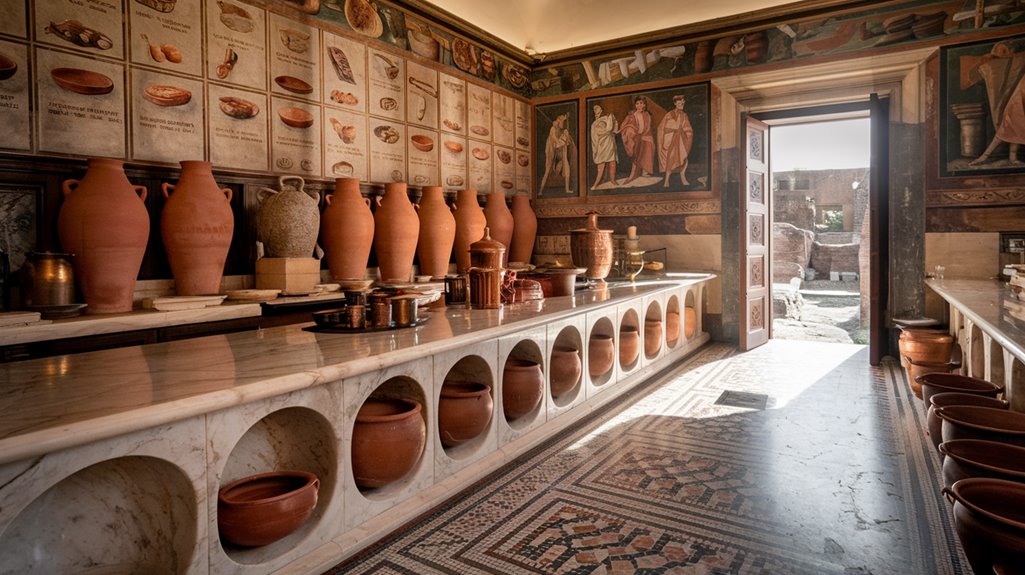
Recent excavations in Pompeii have revealed a remarkably preserved thermopolium in Regio V, breathing new life into our understanding of Roman fast-food culture.
You'll find evidence of a diverse Roman culinary scene through the multi-sided counter's decorative frescoes, featuring images of ducks, roosters, and nymphs that likely advertised the available dishes.
The Pompeii excavation has uncovered deep terracotta jars containing traces of various foods, from duck and pig to fish and land snails.
You can even see where they stored ground fava beans, which they used to modify wine's taste.
The discovery's location near a cistern and fountain shows how strategically these ancient eateries were positioned.
The presence of human remains suggests that the proprietor may have perished during Vesuvius's eruption, frozen in time alongside their business.
Archaeologists also discovered the complete skeleton of a small bred dog, providing valuable insights into ancient Roman pet ownership practices.
A humorous inscription reading Nicia cinaede cacator was found targeting the shop owner, revealing the playful side of ancient Roman culture.
The Legacy: How Ancient Roman Fast Food Shaped Modern Dining
The enduring influence of Roman thermopolia on modern dining culture extends far beyond their humble origins as street-side eateries.
 lack of private kitchens.
lack of private kitchens.
The cultural impact of thermopolia on dining habits remains surprisingly relevant.
Just as ancient Romans adapted to city living by relying on these convenient food stops, you're now part of a society that continues this tradition through modern fast-food establishments.
The concept of serving hot, ready-to-eat meals from a counter hasn't changed much in two millennia.
Even the social dynamics persist – like thermopolia, today's quick-service restaurants serve as gathering spots while facing occasional criticism from health-conscious critics and social commentators.

